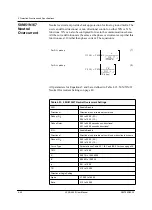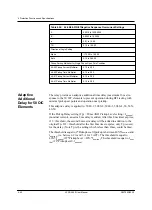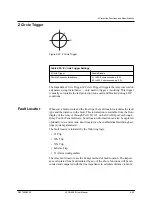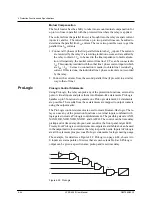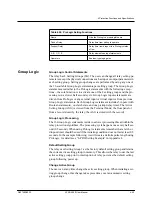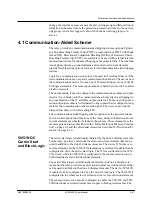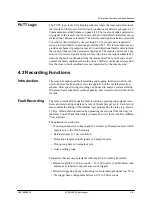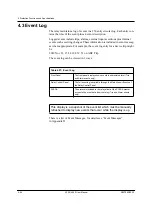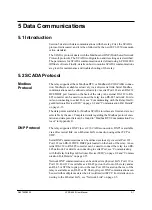
4 Protection Functions and Specifications
D02706R02.30
L-PRO 4000 User Manual
4-49
POTT Logic
The POTT logic is used for tripping schemes where the local end over-reaches
the remote end for forward fault conditions, for details see Figure 4.27: Com-
munication-aided Scheme on page 4-48. The local end sends a permissive trip
signal to the remote end when one of the forward directional elements operates.
The scheme send signal (permissive transfer trip send) is time delayed by timer
setting TL3; the local end is required to sense a forward fault for durations
greater than TL3. The local end does not produce a scheme trip output unless
the remote has detected a forward directional fault and sends the similar per-
missive trip signal to the local end. The local end senses a permissive trip re-
ceive signal and the scheme trip closes the output contacts and removes the
fault contribution from the local end. The remote end acts in a similar fashion
and the fault contribution is removed from the remote end.
Current reversal logic guards against incorrect permissive tripping for installa-
tions with parallel lines where one end of the un-faulted line is contributing
fault current and the other end of the un-faulted line is over-reaching and send-
ing a permissive trip signal. The local reverse directional elements are used
with the permissive receive signal from the remote end to form the blocking
logic. The blocking logic is time delayed by timer setting TL1; the local end is
required to sense reverse faults while receiving the remote permissive trip for
durations greater than TL1. The blocking logic continues to block the scheme
send and scheme trip signals when the reverse fault detection or permissive trip
receive signals go low. Timer setting TD1 determines the current reversal
block extension time.
For line terminals with a weak source, fault conditions could occur on the pro-
tected line where no elements operate at the weak source. Weak infeed (WI)
logic enables the relay to protect lines where one end of the line has no source
or has a very weak source. The WI scheme can only be enabled if the user has
selected the POTT scheme otherwise it is disabled. If enabled, the WI feature
enhances the POTT tripping logic.
WI enables the POTT scheme to quickly isolate line faults where one end of
the line has a high source of impedance.
During fault conditions where no weak source elements pick up the WI logic
echoes back the permissive transfer trip signal received by the weak source. If
a permissive transfer trip is received from the remote line end, AND 110, AND
111 and OR 115 echo a POTT signal back to the remote end. The permissive
transfer trip signal is required to last for durations greater than 20 ms. A 3 ms
time delay pickup and time delay dropout timer TWD2 determine the amount
of time between permissive transfer trip receive signals that the scheme echoes
back. If the permissive transfer trip receive signal is constantly high the WI
logic only echoes back for a time equal to TWD3 plus 3ms. If the PT signal
being received resets then starts up again, after timer setting TWD2, a new per-
missive transfer trip signal echoes back.
The WI logic blocks when forward or reverse faults are detected, the logic is
also blocked for a loss of potential condition. During a reverse or a forward
fault condition, the Zone 2, Zone 4, 51N, or 50N/67 elements could pick up. If
any of these functions pick up, they block the WI scheme by putting a high in-
put into inverted input of AND 110. The blocking condition is required last for
Summary of Contents for L-PRO 4000
Page 1: ...L PRO 4000 Transmission Line Protection Relay User Manual Version 2 3 Rev 0...
Page 2: ......
Page 4: ......
Page 8: ......
Page 10: ......
Page 14: ......
Page 40: ......
Page 50: ......
Page 116: ......
Page 146: ......
Page 218: ......
Page 252: ...Appendix B IED Settings and Ranges Appendix B 34 L PRO 4000 User Manual D02706R02 30...
Page 260: ......
Page 270: ......
Page 302: ......
Page 308: ......
Page 310: ......
Page 312: ......






